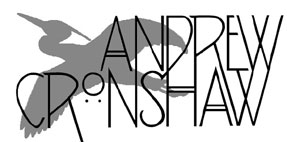
- Andrew Cronshaw website -
- Andrew Cronshaw MySpace -
- Cloud Valley Music website -
- Andrew Cronshaw website -
- Andrew Cronshaw MySpace -
- Back to Reviews Introduction page -
Written in
fRoots
issue 204, 2000
TAPIA ETA LETURIA & AMURIZA
Bizkaiko Kopla Zaherrak
Elkarlanean Triki KD-540 (1999)
JEXUX ARTZE, PELLO DE LA CRUZ, MIKEL ARTOLA, IKER MUGURUZA
Sakanatik Arbaila Ttipira
Elkarlanean KD-521 (1999)
MIKEL LABOA
Gernika Zuzenean 2
Elkarlanean KD-547 (1999)
Three significant albums that between them touch many of the major points of
Euskal (Basque) musical culture.
Singing has always been an important constituent
of the music of leading trikitixa (melodeon and tambourine) duo Joseba Tapia and
Xabier Berasaluze “Leturia”, and on Bizkaiko Kopla Zaherrak they deliver
a full set of dance-songs from the province of Bizkaia - traditional floating
verses, non-narrative slices of life, that have linked up in the songs sung as
people danced. They were chosen by Xabier Amuriza, who is a bertsolari, a
practitioner of the Euskal bardic art of improvising song lyrics.
Very straightforward and upfront, just the voices
of the trio and guests accompanied by exuberant surging, skittering trikitixa
with some mandolin or guitar from Bixente Martinez and Mixel Ducau, it’s an
album of great vitality that excellently exemplifies the heart of Euskal music,
the shape and rhythm of the village and street musics that are still a key sound
of Euskadi, one which is even more prominent nowadays since the evolution of
triki-pop, in which Tapia in particular has been greatly influential.
Another key aspect of the musical psyche of
Euskadi, if rather less immediately accessible than trikitixa, is txalaparta. A
number of hefty wooden planks, two or more, are laid across suitably padded
supports and hit by two players facing one another holding, vertically, thick
wooden batons. It’s not a marimba; the planks don’t really have specific clear
notes, but each rings higher, lower or between the others, and the tone is
affected by where they’re hit - more resonant in the middle, more distant
towards the ends. It’s a very specifically collaborative instrument, the two
players musically empathising to create complex interlocking rhythm and pitch
patterns.
Txalaparta was close to a dying art by the 1960s,
when Jexux Artze and his brother became interested and learned to play from the
Zuaznabar brothers. Later, finding he’d hit something of a block if he just
stuck to what he’d learned, Jexux started to expand the rhythms of the
horse-gallop patterns, “ttakuns”, and found new possibilities. Sakanatik
Arbaila Ttipira is an album whose treasures may not be apparent on first
listening but which contains music rooted far back in a remarkable old culture
that imbues even the most modern aspects of Euskadi’s current artistic upsurge.
It features txalaparta on its own, usually with two players, and also on some
tracks interfacing with other instruments - Iñaki Salvador’s jazzy piano or
txistu, ttun-ttun (string drum) and mouth-whistling from Mixel Etxekopar - and
on a couple of tracks voices, of a group of children and of Mikel Laboa. The
album opens and closes with txalaparta-like music on the church bells of the
village of Arruazu, played by the man who has inherited the skill and
distinctive Arruazu style, Tomas Ganboa.
Txalaparta may be old-rooted, but it has much in
common with modern minimalism and avant-garde-ism, a music to set beside the
bold work of Euskal visual artists or Bilbao’s dramatic new Guggenheim Museum,
and it’s no accident that Mikel Laboa is involved. It’s hard at first, listening
to his thin and wavering voice, to understand just how central this quiet man
has been, and continues to be, in linking together Euskadi’s past and present,
folk art and “high culture”. He’s treasured, if perhaps not always completely
understood, by just about everyone. Gernika - Zuzenean was recorded,
apart from a couple of studio fixes, at a concert in Donostia (San Sebastian) of
works gathered together by Laboa, but not all featuring him.
The first part opens with a confusion of Laboa’s
and other voices speaking Euskara over a repeating traditional trikitixa motif
from Iker Goenaga and Tapia in a version of Goenaga’s tribute to the sad but
valuable life of trikitilari “Elgeta”, followed by Josetxo Silguero and Pascal
Gaigne’s baritone sax and electronics treatment of a traditional song collected
by Laboa. He sings a Bernardo Atxaga poem to his simple guitar and the piano of
Iñaki Salvador. The latter joins Jexux Artxe and Pello de la Cruz in a piece
from their txalaparta album, then finally Laboa sings behind Izaskun
Ellakuriaga’s reciting of a poem.
Part two consists of three pieces by Laboa
featuring his singing and speaking voice surrounded by Carlos Puig’s powerful
orchestral and choral work - Txoria Txori, a song he wrote in the 60s
which has gained great popular currency, Baga-biga-higa, based on
onomatopoeic traditional verses, and Gernika, an almost Miklós Rózsa-like
requiem for the town bombed into eternal Euskal memory during the Civil War.
© 2000
Andrew Cronshaw
You're welcome to quote from reviews on this site, but please credit the writer
and fRoots.
Links:
fRoots - The feature and
review-packed UK-based monthly world roots music magazine in which these reviews
were published, and by whose permission they're reproduced here.
It's not practical to give, and keep up to date,
current contact details and sales sources for all the artists and labels in
these reviews, but try Googling for them, and where possible buy direct from the
artists.
CDRoots.com in the USA, run by
Cliff Furnald, is a reliable and independent online retail source, with reviews,
of many of the CDs in these reviews; it's connected to his excellent online magazine
Rootsworld.com
For more reviews click on the regions below
NORDIC
BALTIC
IBERIA (& islands)
CENTRAL & EASTERN EUROPE, & CAUCASUS
OTHER EUROPEAN AMERICAS OTHER, AND WORLD IN GENERAL
- Back to Reviews Introduction page -